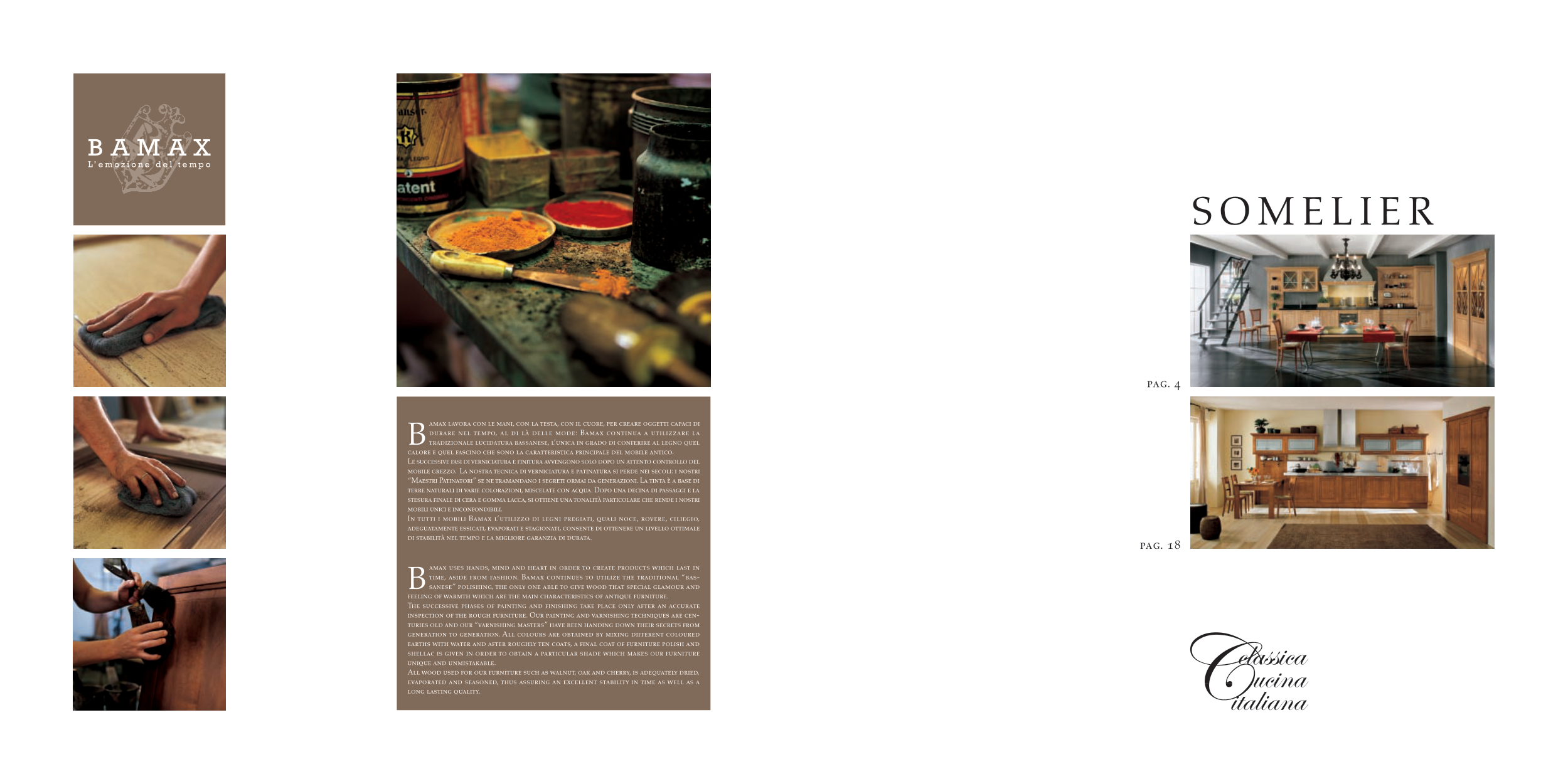B
amax lavora con le mani, con la testa, con il cuore, per creare oggetti capaci di
durare nel tempo, al di là delle mode: Bamax continua a utilizzare la
tradizionale lucidatura bassanese, l’unica in grado di conferire al legno quel
calore e quel fascino che sono la caratteristica principale del mobile antico.
Le successive fasi di verniciatura e finitura avvengono solo dopo un attento controllo del
mobile grezzo. La nostra tecnica di verniciatura e patinatura si perde nei secoli: i nostri
“Maestri Patinatori” se ne tramandano i segreti ormai da generazioni. La tinta è a base di
terre naturali di varie colorazioni, miscelate con acqua. Dopo una decina di passaggi e la
stesura finale di cera e gomma lacca,si ottiene una tonalità particolare che rende i nostri
mobili unici e inconfondibili.
In tutti i mobili Bamax l’utilizzo di legni pregiati, quali noce, rovere, ciliegio,
adeguatamente essicati, evaporati e stagionati, consente di ottenere un livello ottimale
di stabilità nel tempo e la migliore garanzia di durata.
B
amax uses hands, mind and heart in order to create products which last in
time, aside from fashion. Bamax continues to utilize the traditional “bas-
sanese” polishing, the only one able to give wood that special glamour and
feeling of warmth which are the main characteristics of antique furniture.
The successive phases of painting and finishing take place only after an accurate
inspection of the rough furniture. Our painting and varnishing techniques are cen-
turies old and our “varnishing masters” have been handing down their secrets from
generation to generation. All colours are obtained by mixing different coloured
earths with water and after roughly ten coats, a final coat of furniture polish and
shellac is given in order to obtain a particular shade which makes our furniture
unique and unmistakable.
All wood used for our furniture such as walnut, oak and cherry, is adequately dried,
evaporated and seasoned, thus assuring an excellent stability in time as well as a
long lasting quality.
B A M A X
L’ e m o z i o n e d e l t e m p o
S OME L I E R
pag. 4
pag. 18


